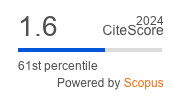Malaysian Journal of Mathematical Sciences, June 2025, Vol. 19, No. 2
System of Caputo Fractional Differential Equations for Tuberculosis Disease with Effects of Immune and Asymptomatic Patients Classes: Theoretical and Analytical Solutions
Nawaz, R. and Nik Long, N. M. A.
Corresponding Email: nmasri@upm.edu.my
Received date: 15 July 2024
Accepted date: 9 November 2024
Abstract:
Tuberculosis is an extremely serious disease that affects a large number of people around the world. In this paper, we investigate epidemic model of TB in the sense of Caputo derivative, integrating the impact of immune and asymptomatic classes. The primary challenge is accurately estimating the disease spread and assessing the effectiveness of human immunity. We establish the qualitative analysis of the constructed model, which include positivity, existence, and uniqueness of the solution, and Hyers—Ulam stability of the solution. The computed basic reproduction number ${\bf{R}}_0$ is used to obtain the normalized forward sensitivity index for each parameter with the purpose of identifying key parameters essential for the disease control. Numerical analysis are carried out utilizing the homotopy perturbation method and fractional differential transform method. The comparative study of integer order $\varrho=1$ is done to validate the numerical performance. Our findings suggest that immune class and asymptomatic class individuals play a significant role in reducing/spreading TB prevalence and burden within human populations. We noticed a significant decline in the susceptible and asymptomatic classes as a result of self—immune and adequate treatment. These findings contribute to the management and control of the tuberculosis disease.
Keywords: Caputo fractional tuberculosis model; homotopy perturbation method; fractional differential transform method









